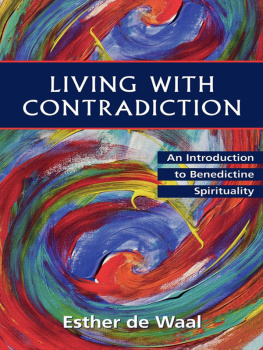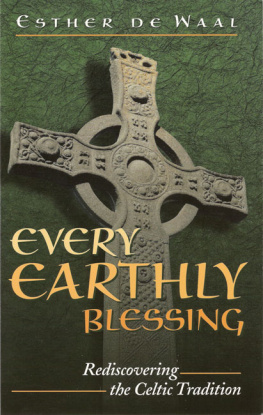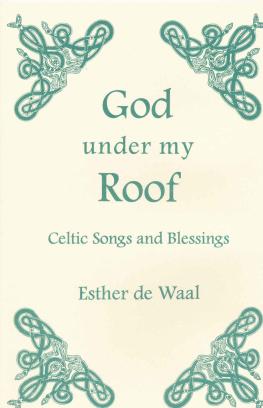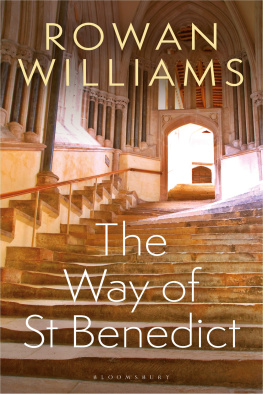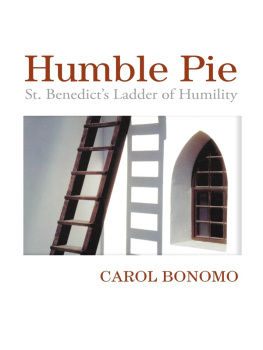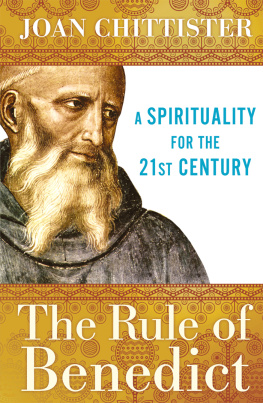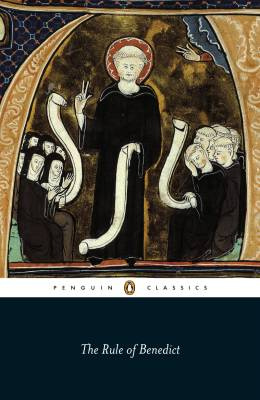All rights reserved. No part of this book may be reproduced, stored in a retrieval system, or transmitted in any form or by any means, electronic or mechanical, including photocopying, recording, or otherwise, without the written permission of the publisher.
Unless otherwise noted, the Scripture quotations contained herein are from the New Revised Standard Version Bible, copyright 1989 by the Division of Christian Education of the National Council of Churches of Christ in the U.S.A. Used by permission. All rights reserved.
Living with Contradiction: an introduction to Benedictine spirituality / Esther de Waal.
p. cm.
Originally published: London: Fount Paperbacks, 1987, in series:
Rhythm of life.
Includes bibliographical references.
ISBN 978-0-8192-1754-7 (pbk.)
1. Benedict, Saint, Abbot of Monte Cassino. Regula. I. Title.
BX3004.Z5D35 1998.
255.106dc21 97-48801
Preface
It is very fascinating to see how, in the ten years since this book was first written, increasing numbers of lay people like myself are turning to the monastic tradition. Here they find support on their Christian journey which they often fail to find in the institutional church, where parish and diocesan life can be extremely busy, and seemingly lacking in any sort of contemplative focus. The church is getting a bad press except for her monasteries. This comment, which I read recently in an American national newspaper, shows how widespread this feeling is. Debates on political issues, on fund-raising or administrative concerns seem to drown out the voice of prayer.
Why is it that 1500 years after it was first written, so many thousands of people today are reading the Rule of St Benedict? I believe that it is because this short sixth-century monastic text, coming as it does from St Benedict's own experience of life, can still bring support, inspiration and challenge. His Rule is simply a practical manual to give guidance to a family of brothers, an extended household, who had to earn their living, who were concerned with food, with the care of visitors or the sick, with the upkeep of buildings and land, while recognizing the need for time to read and study and yet determined to make prayer the central focus, the one priority of their lives. St Benedict helped them to bring balance and rhythm into a life whose pressures and demands were remarkably similar to our own.
Balance and moderation are commonly regarded as the hallmarks of Benedictine spirituality. Yet it is vital, if we are to recognize the power and the influence of the Rule, not to see this as anything mediocre, lukewarm or middle of the road. There is nothing safe or easy in holding a central position between opposites. It asks me to be fully alive, constantly moving forward, even at those times when I am feeling as though I am only holding on precariously. The way of St Benedict is the way of the Gospel. As Christ came to make us fully alive, to open eyes and ears and hearts to the fullness of life that is on offer, so too is the Rule vibrant and infused with energy.
At the heart of the Gospel, as at the heart of Christ's own life, of course there is paradox. So living with the Rule of St Benedict means living with paradox, with contradiction. This is something for which I am profoundly grateful, and that gratitude increases as the years go on. Life does not add up: the longer I live the more that is brought home to me. It was not the message that I received from my parents or one that was taught to me by any educational establishment as I was growing up. Nevertheless I think, looking back, that this is probably one of the most useful lessons that one can hear. It is curiously liberating to realize that I shall go on until the day of my death trying to hold differing things together and that the task (for which I need all the help that I can get) must be to do it creatively, so that the tensions may become life-giving.
Today as I look around me I see a world in which there is not so much holding together as splitting apart. There is increasingly polarisation, whether in politics or in religion or in the divides within society itself. People seem to be building barricades to maintain their positions, unwilling to listen to other points of view, as they metaphorically (and sometimes actually) wave banners and shout slogans which make statements declaring the certainties to which they cling. It seems so adversarial, antagonistic.
How far this is from the stance of St Benedict, whose first, opening word of the Rule establishes the keynote of all that is to follow: Listen. Listen, he goes on to say, with intention, with love, with the ear of the heart that most lovely small phrase which suggests that we listen not cerebrally with the intellect, but with the whole of ourselves, our feelings, emotions and imagination. I am taken away from an inner monologue with myself that is very attractive and can all too easily become an egotistical and defensive exchange. But if I learn to listen then I am drawn into a giving and receiving which is deeply incarnational, which is gentle and open, accepting of the other (and not least of the other side of my own self). Like the diameter of a circle or the diagnosis of a disease, true dialogue means going through to the centre just as the stone boss carries the thrust of a medieval arch so that that creative holding together of the tensions brings the essential stability to the whole building.

What follows in this book takes the form of meditations which I originally gave at the Benedictine Experience weeks which first started when I was living in Canterbury and have since then spread widely elsewhere. The pattern of our time together was shaped by an attempt to live out that daily rhythm which is fundamental to St Benedict's recognition that we are all made up of body, mind and spirit and that due attention must be paid to each of these elements. So there was time for prayer, study and work, all set within the saying of the daily offices, the opus Dei. There was time to be alone and time to be with others, time for silence and time for recreation.
The week worked at two levels. It was an individual experience in which each participant learnt more about himself or herself and tried to carry that humane balance back into their working lives. But it was also a shared, corporate experience of making a temporary community out of people of very different backgrounds and religious denominations and in the case of South Africa, of different race. So right at the start we were already living out one of the insights of the Rule: unless we learn to live with ourselves we cannot live with others. But equally, unless and until we have leant to live fully and creatively with others we cannot hope to live with our own selves. We had to face the tension of that constant inward, outward movement which is one of the inescapable contradictions of all our lives.
It is the daily exploration of the themes of the Rule, in the form of meditations rather than as discussion or teaching, that has formed this book. They are set out very much as I originally delivered them. I hope that they will be read prayerfully and reflectively just as the original talks were meant to be heard prayerfully and reflectively. This means reading them slowly, which is not a natural accomplishment of the twentieth century, where the ruminative reading of an earlier age is no longer familiar. Sometimes the same themes or the same images will appear and re-appear, and this is intentional. This is after all what I find in the Rule itself, which the longer that I have stayed with it, the more I have come to appreciate how like a tapestry it is, and how one can be drawn first by one thread and then by another.

